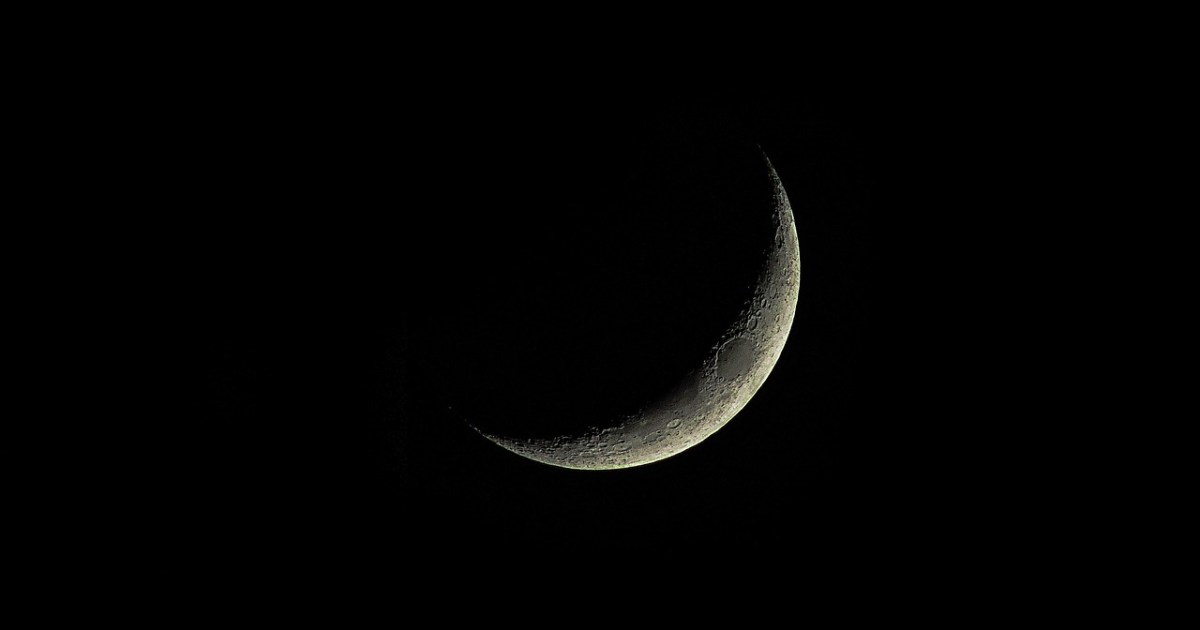There is a great opportunity this year for the Arab countries to agree on the date of Eid al-Fitr on April 10, 2024 (Pixabay)
The Arab countries differed in their announcement of the crescent of the month of Ramadan. Countries such as Saudi Arabia, Qatar, and Egypt began their fasting on March 11th, while countries such as Oman and Jordan disagreed and began their fasting on the following day, March 12th.
But it seems that this disagreement will turn into an agreement on the first of Shawwal this year, as the Arab countries are expected to agree on a single date for Eid al-Fitr. To understand the astronomical aspect of that agreement, we can start by understanding the form of the moon’s revolution around the Earth.
Moon cycle
When we raise our heads to the sky at night, we see the moon in phases that change day after day, such as the crescent, gibbous, square, or full moon. These phases are nothing but a reflection of sunlight on the moon, and the change occurring in them occurs due to the moon’s rotation around the Earth as well.
You can easily observe this cycle from your home. Just go up to the roof of the house at the same time every day and contemplate the position of the moon in the sky. You will find that it changes its place as if it were jumping in the sky day after day, so at the beginning of the Hijri month it will be close to the horizon at the moment of sunset, then it will rise. Up as the days go by.
(Watch: A video from NASA explaining the relationship of the moon’s phases to its rotation around the Earth during the year 2024)
Now let us hypothetically assume that we are able to turn back time day after day. This means that the moon will return to stand exactly next to the sun in the sky, and in astronomy, this is the moment of central conjunction.
After the moment of conjunction, the moon begins to move away from the sun in the sky little by little. We cannot see it easily at first because it is close to the sun, but after about 14 hours from the moment of conjunction, the naked eye can see the moon in the sky after sunset.
Sighting of the crescent
According to Islamic law, specialists from the relevant legal bodies go out to search for the Ramadan crescent after sunset on the day of sighting on the twenty-ninth of Ramadan. If they are able to spot it, the next day will be the first of the new month, which is Shawwal in this case, and if they are unable to do so, it will be the next day. Completing the month of Ramadan.
According to the Qatari Calendar House, the moment of the central conjunction (central conjunction) for this month is on Monday, April 8, at 21:22 Doha time.
According to accurate astronomical calculations, the beginning of the month of Shawwal 1445 AH and the first day of Eid Al-Fitr will be on Wednesday, April 10, 2024 AD. The legal decision to enter the month of Shawwal remains within the jurisdiction of the Investigation Committee of the Ministry of Endowments, and the crescent will be born on Monday, April 8 at 9:22 pm Doha time. the local. pic.twitter.com/P7dlbHadrZ
- Qatari Calendar House (@qat_ch) March 31, 2024
This means that for countries that will go out to see the crescent on April 8, such as Saudi Arabia and Egypt, it is not possible to see the crescent in the first place, because it will have set before sunset in the first place, which means that Tuesday, April 9, will be declared the completion day of the month of Ramadan. And Wednesday, April 10, the first day of Eid al-Fitr.
As for the countries where the crescent will be sighted on April 9, such as Jordan and Oman, at the moment of sighting, almost a full day will have passed since the birth of the new moon, which gives those countries a great opportunity to observe the crescent and announce the next day (which will be April 10). April, in this case) is the beginning of the month of Shawwal and the first day of Eid al-Fitr.
Arab countries agreement
In an official statement, the National Institute for Astronomical and Geophysical Research in Egypt stated that the sunset of the moon before the sun in the Arab countries that came out to view on April 8 makes April 9 a continuation of the month of Ramadan.
The International Astronomy Center agrees with this, as the calculations announced indicate that seeing the crescent on April 8 is impossible in all Arab countries due to the surface conjunction occurring after sunset, but it is possible with the naked eye and easily on April 9.
The above means that there is a great opportunity this year for the Arab countries to agree on the date of Eid al-Fitr, which will be on April 10, 2024.
Source: Al Jazeera

